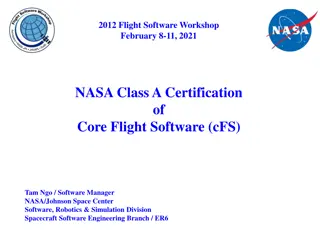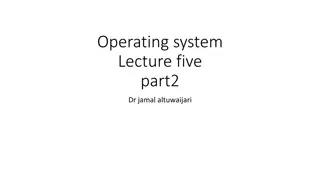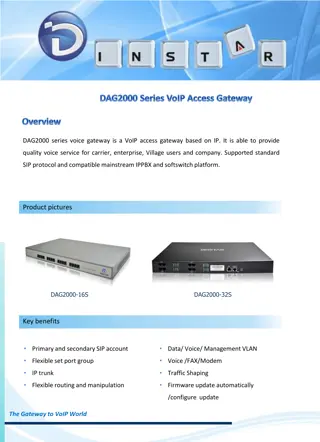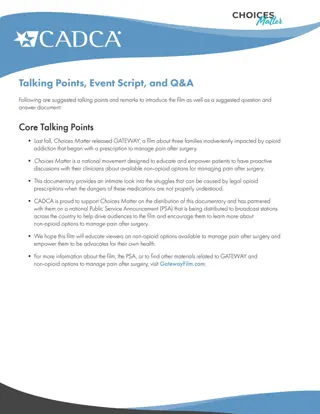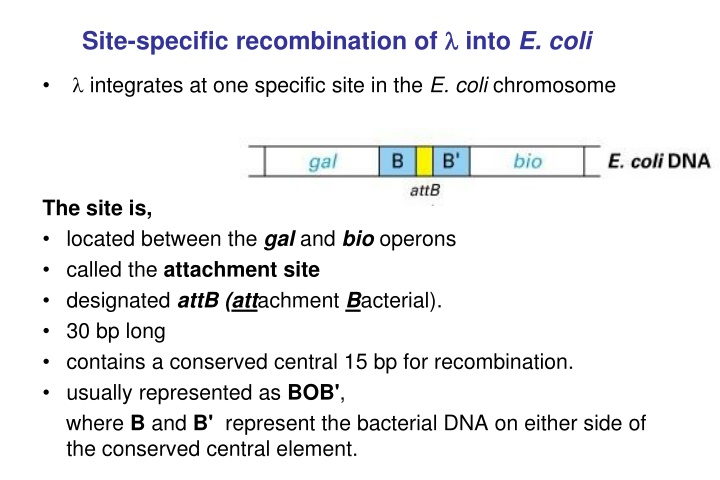
Site-Specific Recombination in E. coli
Explore the mechanism of site-specific recombination in E. coli, including details on attachment sites, bacteriophage recombination, advantages of site-directed recombination cloning, and more. Discover the integration process, structures of attB, attP, attR, and attL, as well as the potential benefits of this technique over traditional cloning methods.
Download Presentation

Please find below an Image/Link to download the presentation.
The content on the website is provided AS IS for your information and personal use only. It may not be sold, licensed, or shared on other websites without obtaining consent from the author. If you encounter any issues during the download, it is possible that the publisher has removed the file from their server.
You are allowed to download the files provided on this website for personal or commercial use, subject to the condition that they are used lawfully. All files are the property of their respective owners.
The content on the website is provided AS IS for your information and personal use only. It may not be sold, licensed, or shared on other websites without obtaining consent from the author.
E N D
Presentation Transcript
Site-specific recombination of into E. coli integrates at one specific site in the E. coli chromosome The site is, located between the gal and bio operons called the attachment site designated attB (attachment Bacterial). 30 bp long contains a conserved central 15 bp for recombination. usually represented as BOB', where B and B' represent the bacterial DNA on either side of the conserved central element.
The bacteriophage recombination site - attP more complex contains the identical central 15 bp region as attB. overall structure can be represented as POP'.
The result of recombination integrated prophage is flanked by two slightly different attachment sites attR has the structure POB attL has the structure BOP'
Potential advantages with site-directed recombination cloning higher efficiency and accuracy than ligation-based cloning shorter training time of personnel can process multiple samples in parallel less need for confirmation after cloning does not require restriction endonuclease digest of vector or insert before insertion of fragment no need for curing vector or insert of restriction sites can clone in large vectors, or with large inserts





